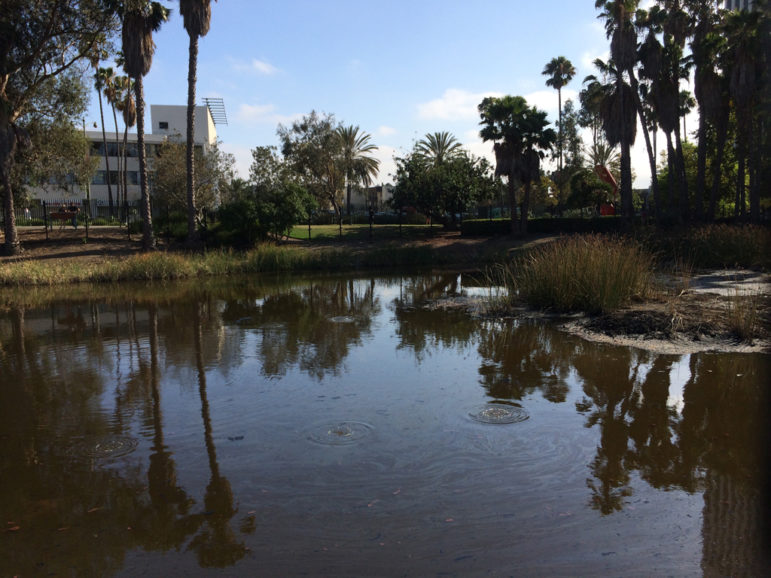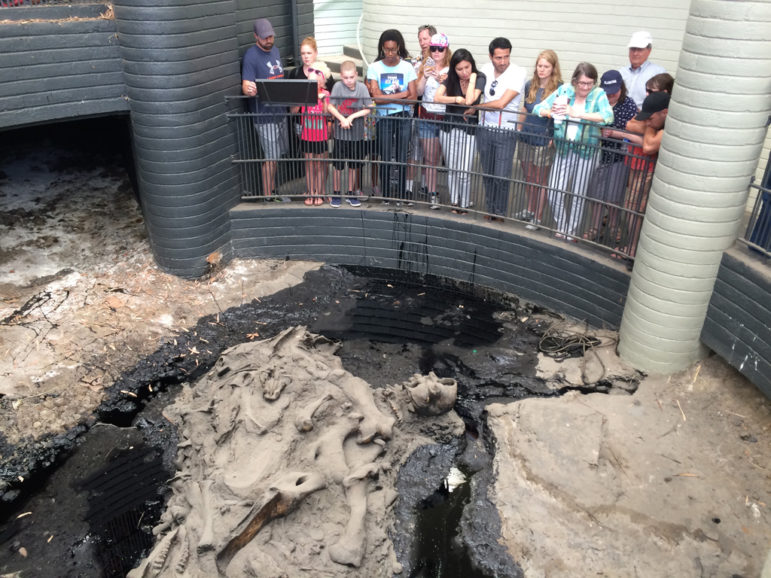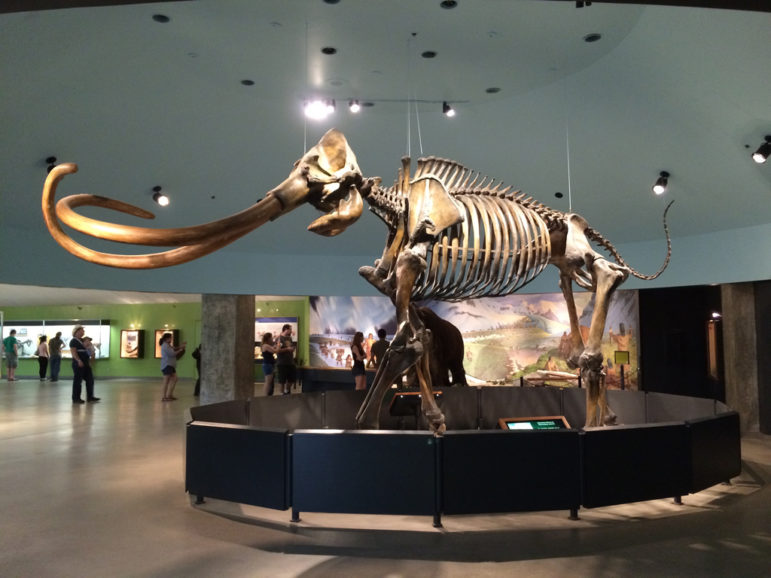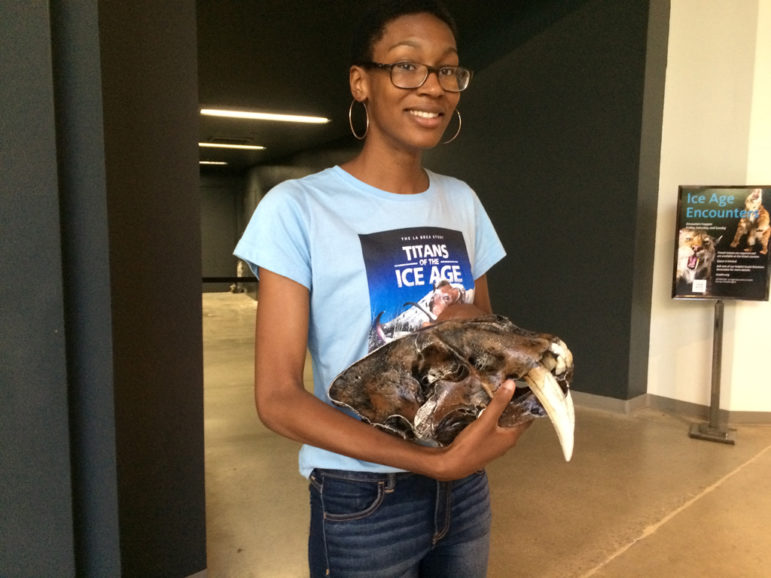
Photos by Stell Simonton
Methane bubbles up through a small lake of water and asphalt at La Brea Tar Pits.
Asphalt oozes up between blades of grass in Hancock Park in downtown Los Angeles.
The 23-acre park on Wilshire Boulevard has several pits where crude oil, also called asphalt, seeps up to the surface through a crack in the earth’s crust.
A visit there offers an invaluable way to draw kids into science.
That’s because the fossilized bones of animals trapped in the asphalt have been preserved for more than 40,000 years.
Mammoths, saber-tooth cats and even camels roamed the area during the last Ice Age from 40,000 to 11,000 years ago. Mammoths that stepped in the asphalt got stuck and were attacked by carnivores, who were then also caught.
Scientists have found more than 2,500 skulls of saber-toothed cats. Full skeletons of the Columbian mammoth are on display in the La Brea Tar Pits Museum, located next to the pits.

Views surround a pit where asphalt continues to bubble up.
The museum, a mesmerizing place for both kids and adults, offers one-day science camps this week for kids in grades K-5, as well as weeklong summer camp for kids through eighth grade. Kids can watch an archaeological dig in progress and then see fossils being studied in a lab.
Free guided tours are available for school groups, with materials for teachers based on state standards and 21st-century skills.
At the summer camp, seventh- and eighth-graders take on the role of various museum staff, from excavator to interpreter. They learn how fossils are found and removed from the ground and how scientists study them. Younger kids photograph, sketch and make casts of fossils.
Kids also learn that the asphalt in Hancock Park is mistakenly referred to as tar, and the name La Brea Tar Pits is based on that mistake. Tar, however, is a byproduct of the burning of coal, while asphalt is naturally occurring or is released during oil refining.
Missed opportunity
Some museums have been reinventing their role in science education by reaching out to community organizations and children in out-of-school time, but the La Brea Tar Pits Museum focuses mainly on schools.

A Columbian mammoth skeleton, dating to the last Ice Age, is on display in the La Brea Tar Pits Museum.
By contrast, the Museum of Science and Industry in Chicago creates partnerships with community-based organizations and other social service agencies to engage underserved youth. In this way it reaches out to young people who have been underrepresented in STEM fields and seeks to interest them in science.
A 2015 Afterschool Alliance report, Full STEM Ahead: Afterschool Programs Step Up as Key Partners in STEM Education, advocated stronger partnerships between STEM-rich institutions and after-school programs. After-school activities can be just as critical as school in activating children’s interest in the sciences, according to the report. It also said that because after-school programs focus on youth development, they offer room for experimentation and failure as well as connection to mentors — experiences that are important in the path toward a science career.
Through this lens, the La Brea Tar Pits Museum is missing a major opportunity to groom young people — particularly those in underserved groups — for science careers.
However, the La Brea Tar Pits Museum is still a potent resource.
After-school providers that operate in schools and do not charge parents for their program may get free guided tours of the museum.
During a visit to the museum kids can see scientists at work behind a glass wall. Some scientists sit at microscopes, using a small brush to identify and separate various “micro-fossils,” bones too small to be identified without magnification.

A staff member of the museum shows the replica of the skull of a saber-tooth cat.
One day last year, a white-coated lab worker was sorting tiny pieces of camel bone. Researchers were trying to learn whether the camel that existed in North America during the Ice Age had a hump or not. Like many Ice Age mammals, it became extinct.
Viewers can watch the work proceed on a large screen that shows what’s under the microscope.
Outside on the grounds, workers were carefully freeing bones from large chunks of earth dug up when a parking lot was constructed next to the museum.
In one exhibit inside the museum, kids test the force needed to pull a stick out of the asphalt. Several films dramatize the Ice Age and the animals that existed then.
The museum also offers several sleepovers during the school year at a cost of $75 per child.
The La Brea Tar Pits Museum is part of the Los Angeles Museum of Natural History, which offers additional summer camps and programming.






























